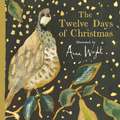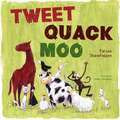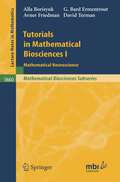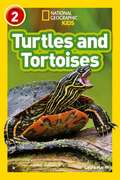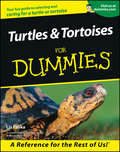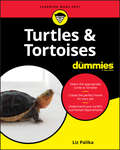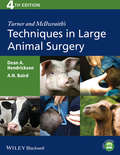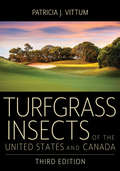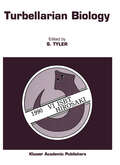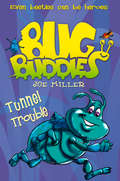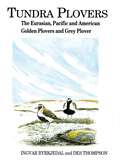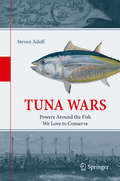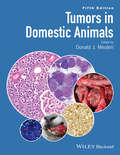- Table View
- List View
The Twelve Days of Christmas
by Anna WrightAnna Wright has rapidly developed a following across the UK for her print, collage work and paintings, following in the footsteps of Emma Bridgewater, Tricia Guild and Liberty as she takes her designs across stationery and homeware. She is now embarking on her third picture book for children. Anna brings humour, beauty and sophistication to this perennially popular Christmas hymn, with her signature style. Exquisitely rendered in pen, ink, watercolour and collage, The twelve days of Christmas are beautifully and playfully reimagined for today's readership - and have never looked so sumptuous.
The Twelve Birds of Christmas
by Stephen MossNaturalist Stephen Moss digs beneath the surface of some of our most popular Christmas carols in an ornithological celebration of the Festive Season. Using the structure of the carol as a jumping off point, he explores the place of twelve fascinating British birds in our history, culture and landscape. Some of the birds are obvious, there’s the swan and of course the partridge. Other chapters are loose interpretations of a verse: for drummers drumming he delves into the woodpecker's distinctive drumming tap. Woodpeckers, he explains, have special padded skulls to mitigate against using its head like hammer drills. They carefully select dead trees for the most hollow, sonorous sound.With brilliant anecdotes and insights, Stephen Moss weaves history, culture, bird behaviour and folklore into a compelling narrative for each species, tracing its fortunes over the past two centuries.PRAISE FOR STEPHEN MOSS: 'A superb naturalist and writer' Chris Packham'Moss has carved out an enviable niche as a chronicler of the natural world' Daily Mail
Tweet, Quack Moo
by Fatima Sharafeddine Hassan ZahreddineWhat's that noise? Tweet, Quack, Moo is a playful read for children learning to count to ten and imitate animal sounds. From barking dogs to clucking chickens, there's so many noises to count!
Tweet of the Day: A Year of Britain's Birds from the Acclaimed Radio 4 Series
by Stephen Moss Brett WestwoodImagine a jazz musician, improvising on a theme. Then imagine that he is able to play half a dozen instruments - not one after another, but almost simultaneously, switching effortlessly between instruments and musical styles with hardly a pause for breath. If you can countenance that, you are halfway towards appreciating the extraordinary song of the nightingale . . .Wherever we are, there are birds. And wherever there are birds, there is birdsong. It's always a pleasure (and a relief) to hear sounds which prove the world's still spinning: whether it's the sighing of migrating redwings on a damp October night, the twitter of swallows fresh in from South Africa in April or the call of the cuckoo in May. Based on the scripts of BBC Radio 4's beloved year-long series, and distilling two lifetimes' knowledge, insight and enthusiasm into these pages, Brett Westwood and Stephen Moss take you month by month through the year, and the changing lives of our favourite birds. From peregrines swapping sea-cliffs for skyscrapers to swifts spending almost their entire lives on the wing; from charms of goldfinches to murmurations of starlings; from ptarmigans thriving in the Highland snow to the bright green parakeets thronging London's parks; this book is packed full of extraordinary insights and memorable facts. Tweet of the Day is a book for everyone who loves Britain's birds.(Illustrations © Carry Akroyd)
Tutorials in Mathematical Biosciences I: Mathematical Neuroscience (Lecture Notes in Mathematics #1860)
by Alla Borisyuk G. Bard Ermentrout Avner Friedman David H. TermanThis volume introduces some basic theories on computational neuroscience. Chapter 1 is a brief introduction to neurons, tailored to the subsequent chapters. Chapter 2 is a self-contained introduction to dynamical systems and bifurcation theory, oriented towards neuronal dynamics. The theory is illustrated with a model of Parkinson's disease. Chapter 3 reviews the theory of coupled neural oscillators observed throughout the nervous systems at all levels; it describes how oscillations arise, what pattern they take, and how they depend on excitory or inhibitory synaptic connections. Chapter 4 specializes to one particular neuronal system, namely, the auditory system. It includes a self-contained introduction, from the anatomy and physiology of the inner ear to the neuronal network that connects the hair cells to the cortex, and describes various models of subsystems.
The Tusk That Did the Damage (Vintage Contemporaries Ser.)
by Tania JamesSelected as a Book of the Year 2016 in the GuardianShortlisted for the International Dylan Thomas Prize 'One of the most compelling and unusual novels I've read this year.... A fascinating story of hunters and observers, old mythical gods and modern politics.' Sarah Hall, Guardian Books of the YearWhen a young elephant is brutally orphaned by poachers, it is only a matter of time before he begins terrorising the countryside, earning his malevolent name from the humans he kills and then tenderly buries with leaves.Manu, the studious son of a rice farmer, loses his cousin to the Gravedigger and is drawn into the alluring world of ivory hunting.Emma is working on a documentary set in a Kerala wildlife park with her best friend. Her work leads her to witness the porous boundary between conservation and corruption and she finds herself caught up in her own betrayal.As the novel hurtles toward its tragic climax, these three storylines fuse into a wrenching meditation on love and revenge, fact and myth, duty and sacrifice. In a feat of audacious imagination and arrestingly beautiful prose, The Tusk That Did the Damage tells an original and heartbreaking story about how we treat nature, and each other.*Tania James's spellbinding new novel Loot is available for pre-order now!*
Turtles of the World: A Guide to Every Family
by Jeffrey E. Lovich Whit GibbonsA lavishly illustrated guide to the world's turtles that covers every family and genusTurtles of the World reveals the extraordinary diversity of these amazing reptiles. Characterized by the bony shell that acts as a shield to protect the softer body within, turtles are survivors from the time of the dinosaurs and are even more ancient in evolutionary terms than snakes and crocodilians. Of more than 350 species known today, some are highly endangered. In this beautiful guide, turtle families, subfamilies, and genera are illustrated with hundreds of color photographs. Each genus profile includes a population distribution map, a table of information, and commentary that includes notable characteristics and discussion of related species.More than 250 beautiful color photosEach profile features a distribution map, table of information, and commentaryBroad coverage includes every family and genus
Turtles of the World: A Guide to Every Family
by Jeffrey E. Lovich Whit GibbonsA lavishly illustrated guide to the world's turtles that covers every family and genusTurtles of the World reveals the extraordinary diversity of these amazing reptiles. Characterized by the bony shell that acts as a shield to protect the softer body within, turtles are survivors from the time of the dinosaurs and are even more ancient in evolutionary terms than snakes and crocodilians. Of more than 350 species known today, some are highly endangered. In this beautiful guide, turtle families, subfamilies, and genera are illustrated with hundreds of color photographs. Each genus profile includes a population distribution map, a table of information, and commentary that includes notable characteristics and discussion of related species.More than 250 beautiful color photosEach profile features a distribution map, table of information, and commentaryBroad coverage includes every family and genus
Turtles and Tortoises: Level 2 (PDF)
by Laura Marsh National Geographic Kids StaffNational Geographic Primary Readers is a high-interest series of beginning reading books that have been developed in consultation with education experts. The books pair magnificent National Geographic photographs with lively text by skilled children’s book authors across four reading levels. Take a dip with turtles in this exciting reader. Packed with beautiful and engaging photos, kids will learn all about these fantastic reptiles. This level 2 reader is carefully levelled for an early independent reading or read-aloud experience, perfect to encourage the scientists and explorers of tomorrow! Level 2: Becoming fluent: These books are a good match for kids who are developing reading stamina and enjoy a longer book. They are ideal for readers of Green, Orange and Turquoise books.
Turtles and Tortoises For Dummies (Dummies Trade Ser.)
by Liz PalikaCoexisting with a turtle or tortoise may not be a warm and fuzzy experience, but it definitely has its rewards. And with more than 250 species to choose from, you’re bound to find one that’s right for you. Looks-wise, they can range from very plain and unadorned to a brightly colored and embellished with every manner of crest, crown, spike, and dewlap. As for personality, you’d be amazed at how very different they can be, ranging from shy and withdrawn, to outgoing and friendly, to outright aggressive. And when it comes to longevity, well, let’s just say that when you commit to a turtle or tortoise, you’re in it for the long haul. For example, the standard American box turtle can live more than 125 years, a leopard tortoise has a life span of up to 100 years, and an aldabran tortoise can live to be more than 200 years old! This fun guide will help you choose the perfect turtle or tortoise for your lifestyle and give it the care it needs to thrive. Turtle and tortoise expert Liz Palika provides cl ear, step-by-step instructions on how to: Select the appropriate turtle or tortoise Provide a suitable environment for your new pal Care for a variety of chelonian (turtle and tortoise) species Supply you pet with a satisfying and healthy diet Create an indoor or outdoor home Understand your turtle’s or tortoise’s special needs Generously illustrated with line drawings and high-quality photographs, Turtles & Tortoises For Dummies covers all the bases. Topics covered include: Deciding whether a turtle or tortoise is right for you Choosing between a turtle and tortoise Who’s Who of turtles and tortoises—a complete guide to dozens of species, where they’re from, what they’re like, and how they are as pets Creating a safe and healthy environment for your pet Recognizing and treating common health problems and finding a good veterinarian to help you care for your chelonian Turtles & Tortoises For Dummies is your fun guide to selecting, caring for, and sharing your life with a chelonian.
Turtles and Tortoises For Dummies
by Liz PalikaSelect the appropriate turtle or tortoise Create the perfect home for your pet Understand your turtle's nutritional requirements Discover how to care for your pet turtle This fun guide will help you choose the perfect turtle or tortoise for your lifestyle and give it the care it needs to thrive. Turtle and tortoise expert Liz Palika provides clear, step-by-step instructions on how to set up a tank, maintain proper water conditions, and feed and care for your chelonian. With descriptions of over 80 species of turtles and tortoises and information on everything from heat lamps to photoperiods, you'll find all you need to keep your reptilian companion safe and happy throughout its life. Inside... Provide a suitable environment Care for a variety of species Supply a satisfying and healthy diet Maintain your pet's health Breed your turtle or tortoise Learn more with helpful top ten lists
Turtles and Tortoises For Dummies (Dummies Trade Ser.)
by Liz PalikaSelect the appropriate turtle or tortoise Create the perfect home for your pet Understand your turtle's nutritional requirements Discover how to care for your pet turtle This fun guide will help you choose the perfect turtle or tortoise for your lifestyle and give it the care it needs to thrive. Turtle and tortoise expert Liz Palika provides clear, step-by-step instructions on how to set up a tank, maintain proper water conditions, and feed and care for your chelonian. With descriptions of over 80 species of turtles and tortoises and information on everything from heat lamps to photoperiods, you'll find all you need to keep your reptilian companion safe and happy throughout its life. Inside... Provide a suitable environment Care for a variety of species Supply a satisfying and healthy diet Maintain your pet's health Breed your turtle or tortoise Learn more with helpful top ten lists
Turtle (UEB uncontracted)
by RnibThis image shows a turtle seen from the side with its head on the right of the page and its back flipper on the left of the page. There is a locator dot shown, which will be at the top left of the page when the image is the correct way up. The turtle's head in the top right of the page shows one of its two eyes. The mouth at the bottom of the head is actually more like a beak. A turtle does not have teeth. To the left of the eye are some scales. The rest of the head and neck are covered in much smaller scales. Down from the neck is the large fore flipper. The tip and edges have larger scales with the centre covered by smaller scales. To the left of the neck is the turtle's large shell. It is like an upside down bowl. It is made from a number of smaller plates all fused together. In the bottom left of the page is one of the turtle's two back flippers. The turtle is a greyish-green colour.
Turtle (UEB contracted)
by RnibThis image shows a turtle seen from the side with its head on the right of the page and its back flipper on the left of the page. There is a locator dot shown, which will be at the top left of the page when the image is the correct way up. The turtle's head in the top right of the page shows one of its two eyes. The mouth at the bottom of the head is actually more like a beak. A turtle does not have teeth. To the left of the eye are some scales. The rest of the head and neck are covered in much smaller scales. Down from the neck is the large fore flipper. The tip and edges have larger scales with the centre covered by smaller scales. To the left of the neck is the turtle's large shell. It is like an upside down bowl. It is made from a number of smaller plates all fused together. In the bottom left of the page is one of the turtle's two back flippers. The turtle is a greyish-green colour.
Turtle (large print)
by RnibThis image shows a turtle seen from the side with its head on the right of the page and its back flipper on the left of the page. There is a locator dot shown, which will be at the top left of the page when the image is the correct way up. The turtle's head in the top right of the page shows one of its two eyes. The mouth at the bottom of the head is actually more like a beak. A turtle does not have teeth. To the left of the eye are some scales. The rest of the head and neck are covered in much smaller scales. Down from the neck is the large fore flipper. The tip and edges have larger scales with the centre covered by smaller scales. To the left of the neck is the turtle's large shell. It is like an upside down bowl. It is made from a number of smaller plates all fused together. In the bottom left of the page is one of the turtle's two back flippers. The turtle is a greyish-green colour.
Turner and McIlwraith's Techniques in Large Animal Surgery
by Dean A. Hendrickson A. N. BairdTurner and McIlwraith’s Techniques in Large Animal Surgery, Fourth Edition is an updated version of the classic resource for step-by-step instruction on basic surgical techniques in cattle, horses, swine, goats, and llamas. With detailed line drawings to demonstrate the principles discussed, the book addresses general aspects of surgery such as anesthesia and equipment and provides descriptions of surgical conditions and techniques commonly encountered in large animal practice. Now including a website with interactive review questions and the figures from the book in PowerPoint, the Fourth Edition is a highly practical, reliable guide for veterinary students and veterinary practitioners with a large animal caseload. The Fourth Edition includes eight new techniques and completely rewritten chapters on anesthesia, equine wound management, and surgical techniques in bovine and swine patients, as well as revisions to reflect advances throughout the book and updated references. Turner and McIlwraith’s Techniques in Large Animal Surgery continues to supply students and practitioners alike with a valuable resource on the fundamental techniques of farm animal surgery.
Turner and McIlwraith's Techniques in Large Animal Surgery
by Dean A. Hendrickson A. N. BairdTurner and McIlwraith’s Techniques in Large Animal Surgery, Fourth Edition is an updated version of the classic resource for step-by-step instruction on basic surgical techniques in cattle, horses, swine, goats, and llamas. With detailed line drawings to demonstrate the principles discussed, the book addresses general aspects of surgery such as anesthesia and equipment and provides descriptions of surgical conditions and techniques commonly encountered in large animal practice. Now including a website with interactive review questions and the figures from the book in PowerPoint, the Fourth Edition is a highly practical, reliable guide for veterinary students and veterinary practitioners with a large animal caseload. The Fourth Edition includes eight new techniques and completely rewritten chapters on anesthesia, equine wound management, and surgical techniques in bovine and swine patients, as well as revisions to reflect advances throughout the book and updated references. Turner and McIlwraith’s Techniques in Large Animal Surgery continues to supply students and practitioners alike with a valuable resource on the fundamental techniques of farm animal surgery.
Turfgrass Insects of the United States and Canada
by Patricia J. VittumThe first edition of this reference work became known as the bible of turfgrass entomology upon publication in 1987. It has proved invaluable to professional entomologists, commercial turf managers, and golf course superintendents and has been used widely in college extension courses. This classic of the field is now in its third edition, providing up-to-date and complete coverage of turfgrass pests in the continental United States, Hawaii, and southern Canada.This revised volume integrates all relevant research from the previous two decades. It provides expanded coverage of several pest species, including the annual bluegrass weevil, invasive crane fly species, chinch bugs, billbugs, mole crickets, and white grubs. Patricia J. Vittum also provides detailed information on the biology and ecology of all major pests and includes the most current information on conditions that favor insect development and biological control strategies pertinent to each species.This edition will include more than 100 black-and-white images, including diagrams of life cycles, sketches of morphological characteristics, and charts highlighting seasonal activity. The book also includes 72 full-color plates (more than 500 color images), showing closeup pictures of most of the key insects (adult and immature stages) and damaged turf. The reader should be able to identify most turf insects through the use of this text. It is a critical reference work that any serious turf professional should own.
Turbellarian Biology: Proceedings of the Sixth International Symposium on the Biology of the Turbellaria, held at Hirosaki, Japan, 7–12 August 1990 (Developments in Hydrobiology #69)
by Seth TylerTurbellarian platyhelminths (or, as they are known now among cladistic systematists, free-living Platyhelminthes) comprise a widely distributed assemblage of lower worms found in marine, freshwater, and even occasionally in terrestrial habitats. The phylum Platyhelminthes may be more widely known for its parasitic members since the major parasitic groups of the tapeworms, flukes, and their relatives are more speciose and have greater impact on everyday human life; but the turbellarians are more diverse and, as inhabitants of virtually any aquatic habitat, are more widespread as well. Many of the lower turbellarians are rather simple in morphology and have served as models for ancestors of the Bilateria, i.e., the bulk of the animal phyla. Others are quite complex organisms, especially in the morphology of their reproductive systems which are highly specialized. The majority are free-living in aquatic habitats but a number of interesting parasitic and commensal species are found scattered among the higher turbellarian taxa. But turbellarians are more than just taxonomic curiosities. They have served as illustrative models in research on a variety of basic life processes. For example, their high capacity for regeneration has made them the subject of a large literature in developmental biology, the occurrence of mixoploidy and other karyological oddities among turbellarians has been important in understanding evolution of the genome, and the fine structure and biochemistry of the nervous system in turbellarians is revealing important principles of the organization of so-called primitive neural systems.
Tunnel Trouble (Bug Buddies #4)
by Joe MillerEven bugs can be heroes! Join the Bug Buddies on bug-tastic adventures, as they pit their wits against the dreaded spider Spinner, creepiest of all creepy crawlies…
Tundra Plovers: The Eurasian, Pacific and American Golden Plovers and Grey Plover (Poyser Monographs #45)
by Des Thompson Ingvar ByrkjedalThis text presents the tundra plovers, comprising of the grey plover and the Eurasian, Pacific, and American golden plovers. Breeding on tundra or northern heaths and moorland, they migrate far south to coastal mudflats, saltings and agricultural landscapes. The text examines the taxonomy, appearance, behaviour, ecology and conservation of golden and grey plovers, and compares and contrasts their natural history and biogeography. It also gives accounts on all aspects of their lifestyle including feeding, mating, parental care, moults, migration and avoidance of predators.
Tuna Wars: Powers Around the Fish We Love to Conserve
by Steven AdolfHistorically, whenever tuna was hauled ashore, the sounds of battle were never far away. ‘Tuna Wars’ tells the untold story of the power struggles emerging around tuna, from the distant past to your present-day dinner table.In the ancient past, the giant tuna was the first fish to become the basis of a large-scale industry and a ‘global’ trade that created fortunes: Hannibal was able to finance his elephant campaign on Rome thanks to tuna. From the Middle Ages on, a tuna fishing monopoly on Spain’s southern coast allowed the nobility to completely dominate the area and even lead the ‘invincible’ Armada. When the markets for tuna increased exponentially thanks to technical advances, tuna eventually became a billion-dollar business and one of the most-consumed fish species worldwide.But this massive expansion came at a price. An 18th century monk in Madrid was the first to warn that tuna fisheries needed to be run sustainably for the sake of future generations. And the issue of sustainability would go on to become a game-changer in the modern tuna wars, characterized by new alliances and partnerships, hybrid warfare and commercial power struggles. In addition to accompanying you through the history of tuna and sharing insights into fisheries science and approaches to sustainably managing fisheries, Tuna Wars offers practical guidance on choosing sustainably fished tuna. In short, it will tell you everything you ever wanted to know about tuna, but were afraid to ask.
Tumors of the Central Nervous System, Volume 9: Lymphoma, Supratentorial Tumors, Glioneuronal Tumors, Gangliogliomas, Neuroblastoma in Adults, Astrocytomas, Ependymomas, Hemangiomas, and Craniopharyngiomas (Tumors of the Central Nervous System #9)
by M. A. HayatThe ninth volume in this essential series discusses key advances in our understanding of neoplasms in the human central nervous system. This publication deals with various aspects of nine separate types of brain tumors. With 70 contributors from 17 nations, this edition offers an unrivalled thoroughness and breadth of coverage that includes the very latest research results on the following tumor types: astrocytoma, lymphoma, supratentorial and glioneuronal tumors, gangliogliomas, neuroblastoma in adults, hemangioma, and ependymoma. The content introduces new technologies and their applications in diagnosis, treatment and therapy of tumors. It explains molecular profiling techniques that enable oncologists to select appropriate therapies for clinical trials, and discusses a number of surgical treatments, including resection and radiosurgery. Volume 9 is interspersed with color illustrations and tables depicting many of the results. This volume joins its fellow publications in a valuable series that fully explores controversies and debates in CNS cancer therapy, and furthers the scientific quest for effective therapies to combat cancer in all its forms.
Tumors of the Central Nervous System, Volume 10: Pineal, Pituitary, and Spinal Tumors (Tumors of the Central Nervous System #10)
by M. A. HayatAdding to a vitally important cycle of publications covering the latest research developments in our understanding of neoplasms affecting the human central nervous system, this edition focuses on numerous aspects of pineal, pituitary, and spinal tumors. As with the previous volumes in the series, this latest work addresses a central imperative in cancer research—the need to standardize classifications, written definitions and investigative guidelines in order to achieve a measure of shared objectivity among academics engaged in one of the most important medical endeavors of our era. It brings together the very latest work by oncologists, neurosurgeons, physicians, research scientists, and pathologists, providing the medical community with a wealth of data and results that, taken together, will advance the cause of cancer research. The volume synthesizes work on diagnosis, drug development, and therapeutic approaches that are typically scattered in a variety of journals and books. It features promising recent work in applying molecular genetics to clinical practice and evidence-based therapy, covering molecular profiling of tumors as well as a number of surgical treatments such as resection and radiosurgery. Together with its counterpart publications, it represents a much-needed central resource that will inform and guide future research efforts.
Tumors in Domestic Animals
by Donald J. MeutenTumors in Domestic Animals, Fifth Edition is a fully revised new edition of the most comprehensive and authoritative reference on veterinary tumor pathology in common domestic animals, now in full color throughout with the most current advances in research and diagnostics. Now in full color with hundreds of exquisite new images showing diagnostic features, pathogenesis, and techniques Adds new sections on relevant clinical pathology and oncology Updated throughout to include the very latest advances in research and diagnostics Takes a logical, user-friendly system approach Written by leading experts on animal tumor pathology
